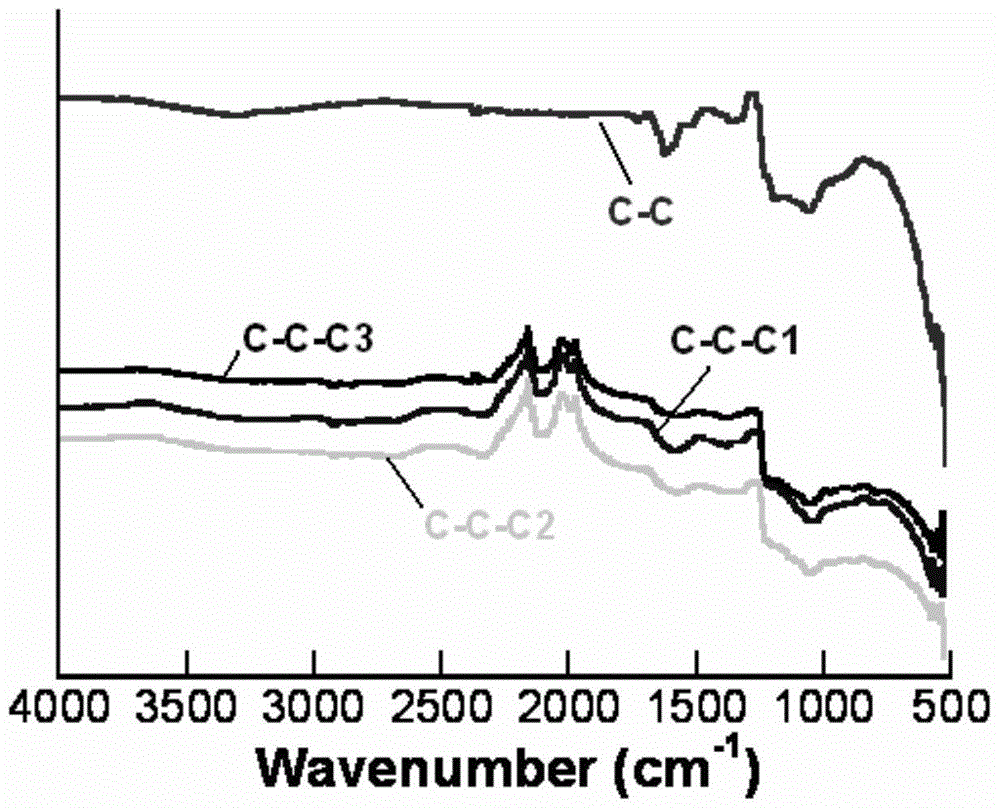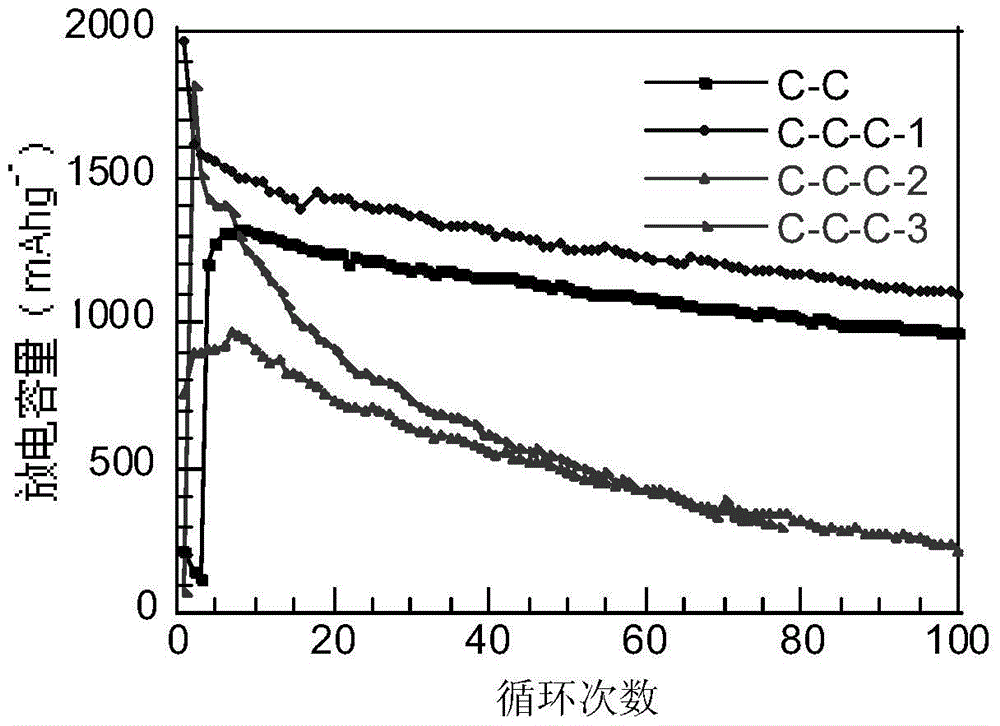Application of carboxymethyl chitosan self-crosslinking polymer in silicon negative electrode of lithium ion battery
A technology of carboxymethyl chitosan and lithium ion battery is applied in the field of preparation of modified biological natural polymer binder, which can solve the problems of poor self-healing function, complicated preparation process, poor adhesion performance, etc. Control, good water solubility, low crystallinity effect
- Summary
- Abstract
- Description
- Claims
- Application Information
AI Technical Summary
Problems solved by technology
Method used
Image
Examples
Embodiment 1
[0041] 1. Preparation of carboxymethyl chitosan self-crosslinking polymer:
[0042] 1) 164 mg carboxymethyl chitosan (C-chitosan) was dissolved in deionized water to configure a 1 wt % C-chitosan solution.
[0043] 2) Add the solution obtained above to 0.5mL0.5mol.L -1 EDC (the molar number is about 17% of carboxymethyl chitosan) and 1mol.L -1 NHS solution, react at room temperature for 24 hours; control the pH value of the solution to about 5.5 by adding appropriate amount of NaOH and HCl solution.
[0044] 3) Perform dialysis and purification on the mixed reaction product obtained in step 2), set MWCO=3.5kDa to remove small molecules generated in the reaction, and obtain carboxymethyl chitosan self-crosslinking polymer hydrogel, namely.
[0045] The solubility of the prepared carboxymethyl chitosan self-crosslinking polymer was as follows: figure 2 As shown in compound C-C-C-1, from figure 2 It can be seen that after cross-linking by EDC, the obtained carboxymethyl chi...
PUM
| Property | Measurement | Unit |
|---|---|---|
| molecular weight | aaaaa | aaaaa |
| molecular weight | aaaaa | aaaaa |
Abstract
Description
Claims
Application Information
 Login to View More
Login to View More - R&D
- Intellectual Property
- Life Sciences
- Materials
- Tech Scout
- Unparalleled Data Quality
- Higher Quality Content
- 60% Fewer Hallucinations
Browse by: Latest US Patents, China's latest patents, Technical Efficacy Thesaurus, Application Domain, Technology Topic, Popular Technical Reports.
© 2025 PatSnap. All rights reserved.Legal|Privacy policy|Modern Slavery Act Transparency Statement|Sitemap|About US| Contact US: help@patsnap.com



